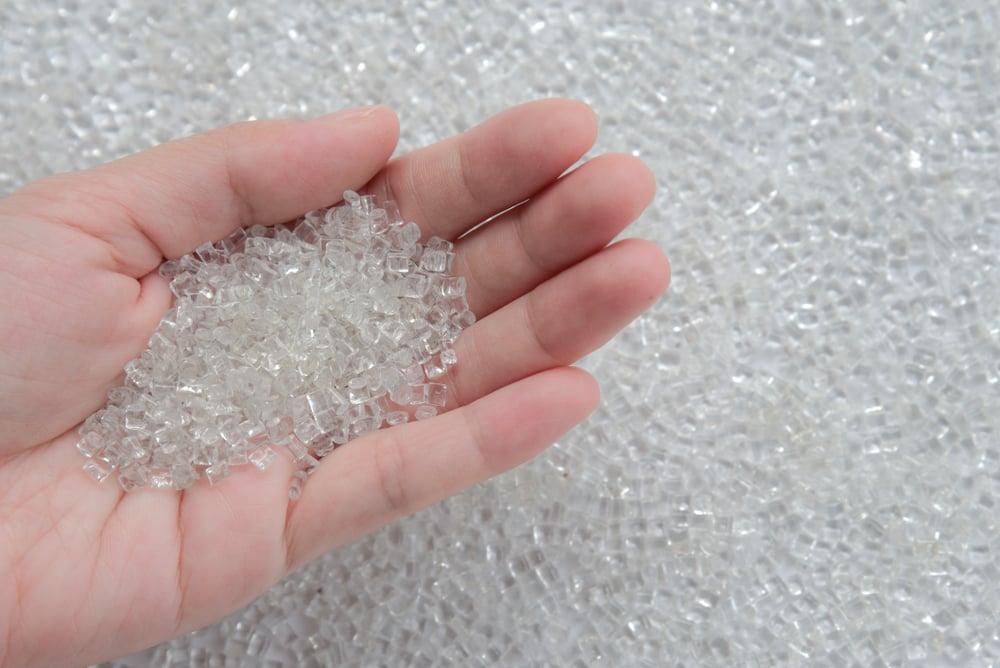Our future becomes sustainable when we all work together, and we're taking steps to get there because we believe that responsible design begins at home. In fact, we're excited to announce that our next range will present fabrics made of recycled polyester.
This blog article looks at the process of creating fabrics in this way, how this kind of plastics waste can be recycled and reused, and how it’s changing the fabrics industry forever.
Defining PET
rPET stands for recycled polyethylene terephthalate, or recycled PET. PET (polyethylene terephthalate) itself is a polymer used to widely manufacture affordable, durable, and recyclable containers and packaging as well as a form of polyester used in contract fabrics and apparel.
Fact: PET is the world’s most recycled plastic.
Experts in the field of recycling claim that a surge of rPET demand its fast approaching, and it’s easy to see why. Here are four reasons:
1: PET is infinitely recyclable
PET has a limitless lifecycle because it can be recycled over and over, forever, with no loss of quality. Because it’s infinitely recyclable, PET can come back into service continually—and not just as another water bottle.
How is this possible?

PET begins life as plastic bottles and packaging for food and drinks, beauty and personal care products, and many other consumer products. It’s everywhere. Once the empty packaging is discarded by the consumer, it goes to a materials recovery facility and the PET plastics are separated from other plastics.
The PET plastics are then crushed, washed, separated, dried, and then shredded into small fragments to undergo further processing to remove any paper labels or caps etc. Finally, the ‘pure’ PET becomes flakes.
It’s these PET flakes that form the raw material for a range of products from plastic bottles to packaging, including materials made from polyester such as consumer apparel and contract fabrics.
PET can be transformed into shoes, shipping materials, automotive materials, and much more.
2: PET has an environmentally positive profile
Reusing plastic products in this way is better for the environment. It saves on greenhouse gasses, by reduces the carbon footprint of industry.
It performs better, ecologically, than glass or aluminium.
It takes 27 pounds of glass versus 2 pounds of plastic to deliver 1,000 ounces of a beverage. – source
Springer, an academic publisher with a focus on rigorous science, found that “glass jars produce between a quarter and a third more greenhouse gases than plastic jars.” - 2008 Life Cycle Assessment (LCA)

“PET offers infinite recyclability, and with a lower carbon footprint, it’s head and shoulders above glass and aluminium. Instead of ending up in landfills, PET bottles and containers can be reprocessed for reuse, over and over, in millions of products. It’s a huge advantage.” – Positively PET
3: Reduction in greenhouse gas emissions
The process of converting rPET is more energy-efficient than glass, aluminium and other materials.
Yes, PET originates as crude oil and natural gas, but 40% of that energy is trapped within the PET polymers and can be just reused again, instead of needing more energy to be generated.
This means rPET leads to a reduction in greenhouse gas emissions by 65% (source).
4: Lightweight solution to logistical problems
rPET is lightweight and strong, resulting in fewer damaged or broken goods when compared to glass shipping materials and bottles.
Because of its weight when compared to other packaging materials, rPET guarantees that more products can be delivered with less weight or fuel needed in transport.
All of this adds up to fewer trucks on the road.

FR-One fabrics are a dynamic part of this sustainability revolution
Plastics pollution is a real issue that industries around the world are tackling and have been tackling for years. When PET bottles, for example, were patented in 1973, there was little thought of a long-term vision for them. Plastic bottles were seen instead as a ‘now’ solution, in that they solved problems that industries and consumers were having in the moment, without thinking about any end-of-life options for them. We’re here to change that.
We hope that you’d found this overview on rPET interesting, as these ground-breaking ways of reusing and recycling industrial materials are the future for us all.





